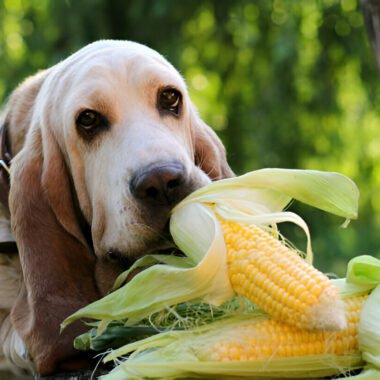Table of Contents
Introduction to Dog food
Providing your furry friend with the best possible nutrition is crucial for their overall health and well-being. Just like humans, dogs require a balanced diet to thrive. Proper nutrition plays a vital role in supporting their immune system, maintaining a healthy weight, and promoting longevity.
Importance of a Balanced Diet
A balanced diet for dogs consists of essential nutrients such as protein, carbohydrates, fats, vitamins, and minerals. These nutrients help to fuel their energy levels, support muscle growth and repair, and keep their coat shiny and healthy.
Role of Dog Food in Health
The type of food you choose for your dog can significantly impact their health. High-quality dog food formulated by reputable brands is specially designed to meet the nutritional needs of dogs at various life stages.
Understanding Dog Food Labels
Deciphering dog food labels can be confusing for pet owners. Understanding the key components can help you make informed decisions about what to feed your furry friend.
Key Ingredients to Look For
Look for dog foods that list high-quality protein sources such as chicken, beef, or fish as the main ingredient. Whole grains, fruits, and vegetables should also be included to provide essential vitamins and minerals.
Things to Avoid
Avoid dog foods that contain artificial preservatives, flavors, and colors. Additionally, steer clear of products that use fillers such as corn, wheat, and soy, which offer little nutritional value and may trigger allergies in some dogs.
Types of Dog Foods
There are several types of dog foods available on the market, each with its own set of benefits and considerations.
Dry Dog Food
Dry dog food, also known as kibble, is a popular choice among pet owners due to its convenience and affordability. It typically has a longer shelf life and can help promote dental health by reducing plaque and tartar buildup.
Wet Dog Food
Wet dog food, often sold in cans or pouches, contains higher moisture content and is more palatable for some dogs. It’s an excellent option for picky eaters or dogs with dental issues who may struggle to chew dry kibble.
Raw Dog Food
Raw dog food diets, consisting of raw meat, bones, fruits, and vegetables, have gained popularity in recent years. Proponents claim that raw diets mimic the natural diet of wild dogs and offer numerous health benefits, including shinier coats and improved digestion.
Grain-Free Options
Grain-free dog foods are formulated without grains such as wheat, corn, and rice. While these diets may be beneficial for dogs with grain allergies or sensitivities, recent research has raised concerns about their potential link to heart disease in some breeds.

Top Factors to Consider When Choosing Dog Food
When selecting the best dog food for your furry friend, consider the following factors:
Age and Life Stage
Dogs have different nutritional requirements depending on their age and life stage. Puppies, adult dogs, and seniors each have unique dietary needs that should be addressed with appropriate food choices.
Breed Size
Large and giant breeds have different nutritional requirements than small and toy breeds. Choose a dog food formula specifically tailored to your dog’s size to ensure they receive the proper balance of nutrients.
Special Dietary Needs
Some dogs may have special dietary needs due to allergies, sensitivities, or underlying health conditions. Consult with your veterinarian to determine the best diet plan for your dog’s specific needs.
Reviews of Top Dog Food Brands
With so many dog food brands on the market, it can be challenging to determine which ones are worth your investment. Here are reviews of some of the top dog food brands:
Blue Buffalo
Blue Buffalo offers a wide range of high-quality dog food formulas made with natural ingredients. Their products are free from artificial preservatives, colors, and flavors, making them a popular choice among pet owners.
Royal Canin
Royal Canin is known for its breed-specific formulas tailored to the unique nutritional needs of different dog breeds. Their products are backed by scientific research and formulated to support optimal health and wellness.
Orijen
Orijen is renowned for its biologically appropriate diets that mirror the natural diet of wild dogs. Their recipes are packed with high-quality protein sources and limited carbohydrates to promote overall health and vitality.
Taste of the Wild
Taste of the Wild offers grain-free dog food formulas inspired by the diet of wild wolves. Their recipes feature novel protein sources such as bison, venison, and trout, providing a taste of the wild for your canine companion.
Homemade Dog Food Recipes
For pet owners who prefer to make their dog’s food at home, here are some balanced recipe ideas to consider:
Benefits and Risks
Homemade dog food allows you to have full control over the ingredients and can be tailored to your dog’s specific dietary needs. However, it’s essential to ensure recipes are nutritionally balanced to prevent deficiencies or excesses.

Tips for Transitioning to a New Dog Food
Switching your dog to a new food should be done gradually to avoid digestive upset. Follow these tips for a smooth transition:
Gradual Introduction
Mix small amounts of the new food with your dog’s current food, gradually increasing the proportion over several days until they are fully transitioned.
Monitoring Digestive Health
Pay attention to your dog’s stool consistency and overall digestive health during the transition period. If you notice any signs of digestive upset, slow down the transition process.
Conclusion
Choosing the best dog food for your furry friend is a critical decision that can significantly impact their health and well-being. By understanding the importance of nutrition, deciphering dog food labels, and considering factors such as age, breed size, and dietary needs, you can make informed choices to ensure your dog thrives.











